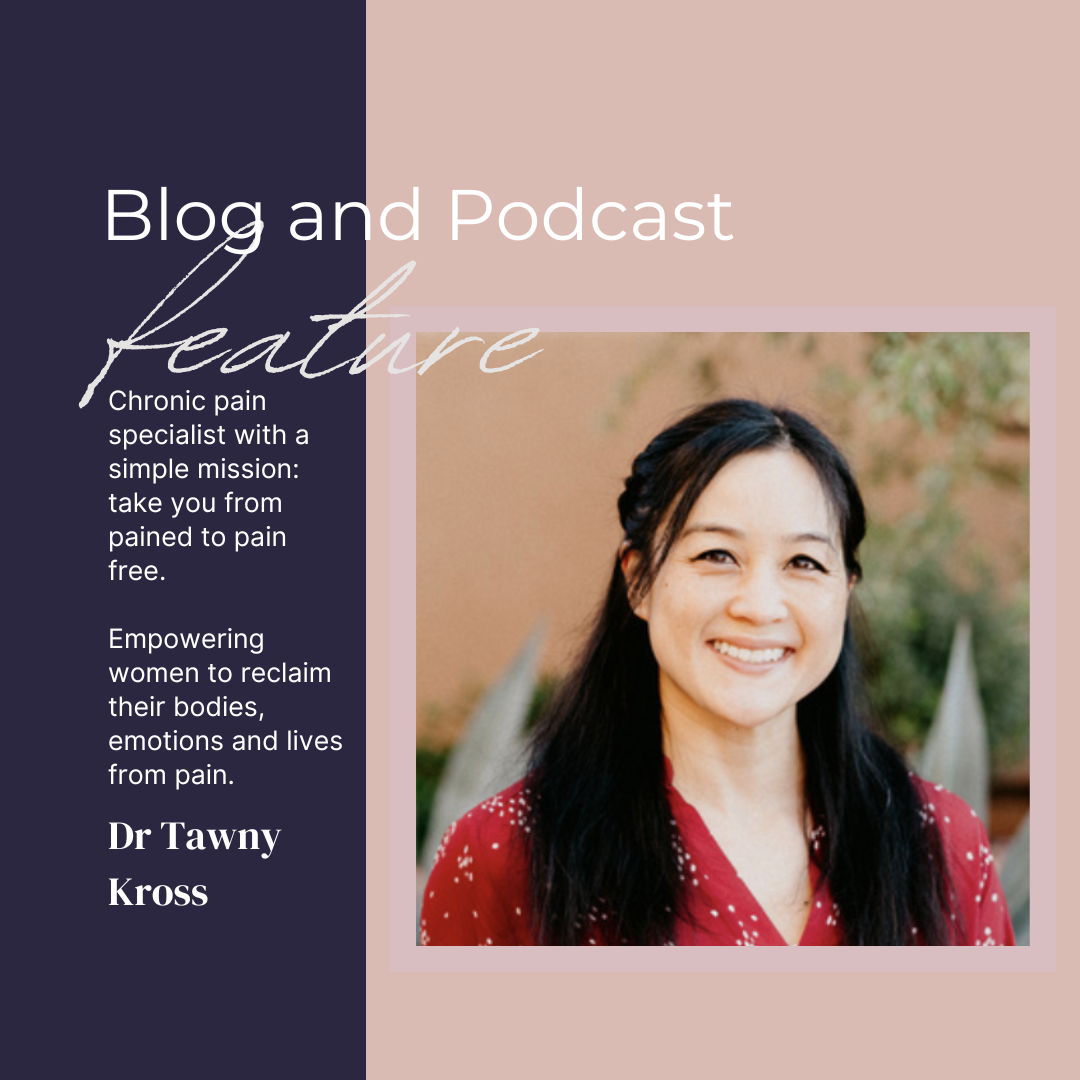Burnout and Chronic Pain: The Overlooked Link High-Achieving Women Can’t Ignore
You’re beyond tired. Your body aches, but every test comes back “normal.” You’ve tried it all—massages, bubble baths, even a solo vacation—but the relief never lasts.
If you’re a high-achieving woman who’s done everything right and still finds herself stuck in pain, burnout, or both—this might be the missing piece no one’s told you about.
A high-achieving woman is someone who consistently sets and strives to meet ambitious goals—often excelling in her career, relationships, or personal development. She is driven, hardworking, and often holds herself to very high standards. While this determination can lead to success, it can also come with a tendency to overcommit, neglect self-care, and push through exhaustion—making her more vulnerable to burnout.
Meet Thandi. She’s a corporate manager, a mom of two, volunteers on weekends, and always says yes when asked for help. She’s the one everyone relies on because she “gets things done.” From the outside, Thandi looks like she has it all together—but inside, she’s running on empty, constantly anxious, and struggles to relax without feeling guilty. That’s a high-achieving woman: accomplished but often overstretched.
Burnout isn’t just exhaustion. It’s trauma.
Most people think of trauma as one catastrophic event. But trauma is anything that overwhelms your nervous system’s ability to cope. And burnout? It’s chronic, prolonged overwhelm—especially for women who carry the invisible mental load of caregiving, working, and holding it all together.
When that overwhelm lingers, your nervous system gets stuck in survival mode. And in survival mode, your body doesn’t feel safe enough to rest, repair… or heal.
When Burnout Becomes Physical: The Pain Connection
Burnout and chronic pain are often treated as two separate issues: one emotional, one physical. But your nervous system doesn’t see it that way.
When you’re stuck in burnout, your nervous system is in a heightened state of alert. It’s constantly scanning for danger. It’s doing its job—to keep you alive—but in doing so, it also alters how your body processes pain, tension, and fatigue.
Chronic stress from burnout leads to:
- Inflammation in the body, increasing pain sensitivity
- Muscle tension and postural holding patterns that restrict movement and circulation
- Disrupted sleep cycles, robbing your body of recovery time
- Reduced vagal tone, impairing your body’s ability to shift into a “rest-and-digest” state
- Hypervigilance, which amplifies pain perception
Even more importantly, your brain becomes more protective. And when the brain believes your body is under constant threat, it can create or amplify pain signals—even when there’s no tissue damage.
This is the pain–burnout loop so many women are caught in:
Burnout leads to dysregulation → Dysregulation leads to pain → Pain becomes another source of stress → And the cycle continues.
Case Study: When the Body Says “Enough”
“I felt sick, but couldn’t put a finger on it.”
A woman in her mid-30s—we’ll call her Lisa—had built what looked like a successful life from the outside. She held a demanding corporate role that involved regular travel and solo decision-making. At home, she was raising two small children with limited support. She was competent, capable, and often described by others as “strong.” But underneath it all, Lisa’s body was screaming for help.
It started subtly. Headaches that morphed into migraines. Stiff, aching muscles. Heart palpitations that seemed to come out of nowhere. Her menstrual cycle became irregular and unpredictable—once even arriving in what felt like an “entire period in a single moment.” Her blood pressure and blood sugar fluctuated wildly, and no doctor could explain why.
She did what many high-functioning women do: she sought answers, diligently. Blood tests. Examinations. Specialist referrals. But every time the symptoms faded before the appointment, she was sent home with vague reassurances—perhaps a virus from her travels, they said. Nothing conclusive. Nothing that validated the growing fear that something deeper was wrong.
The Breaking Point
The illusion cracked when Lisa landed in the hospital with what she believed was a heart attack. The crushing weight on her chest, the dizziness, the rapid pulse—it was terrifying. But after hours of monitoring, doctors told her it was “just a panic attack.”
It was a wake-up call.
Her sleep was shot. She’d lie awake, exhausted but wired. She started cancelling plans that once brought her joy. She vividly remembers one moment: backing out of a dinner party at her own home because she couldn’t muster the energy to “suck it up and pretend”—a superpower she thought she had.
More than the physical pain, there was the shame and frustration of being betrayed by her own body. She wasn’t supposed to break. She was the strong one. The capable one. The one who got things done.
The Shift
What changed everything wasn’t a diagnosis—it was ownership. Lisa began to understand that burnout wasn’t something happening to her; it was something she was participating in, unknowingly. Blaming the job, the family, or the endless responsibilities hadn’t brought relief. But acknowledging her own role in the pattern opened a door to healing.
Lisa began to work with Jacqui Meyer. She began to reconnect with her body through somatic practices and breathwork. She created space for self-compassion. She learned about trauma responses and started identifying her own. And perhaps most importantly—she implemented boundaries, asked for help, and finally put herself on the list of priorities.
From Pain to Wisdom
Lisa now sees her symptoms not as betrayals, but as signals. Her body, once a source of frustration, is now a wise messenger. She checks in daily. She listens. She responds with care.
Her message to other high-achieving women is simple but profound:
“You don’t have to burn out. Learn the tools now, before your body forces you to stop.”
What If Your Pain Is Actually a Message?
Chronic pain is one of the loudest megaphones your body can use. But it’s not the only one.
The body speaks in signals long before it screams in symptoms.
- That afternoon crash at 3pm?
- The stomach clench when your phone pings?
- The irritability that seems to come out of nowhere?
These are early cues that your nervous system is overwhelmed.
But most of us weren’t taught to listen. We were taught to override. To push through. To numb. To perform. And when we don’t hear the whispers, the body turns up the volume until it has no choice but to yell.
It’s kind of like hunger—if you only respond once you’re starving and cranky, you’ve missed a series of subtle messages along the way. Listening to your body isn’t “woo”—it’s wise.
Why Bubble Baths and Vacations Don’t Work (Alone)
Here’s what surprises a lot of people: rest doesn’t always work.
If your nervous system still believes it’s under threat, no amount of sleep, bubble baths, or vacations will truly reset you. You might feel a temporary shift, but soon you’re right back in the exhaustion and pain.
That’s because healing doesn’t happen just from doing less. It happens when your body feels safe enough to shift out of survival mode.
True recovery requires regulation—the ability to move between states of activation and rest, without getting stuck in fight, flight, freeze, or collapse.
Let us tell you about a client, “Katie.” Katie was the queen of self-care.
Massages? Booked.
Walks? Daily.
Vacations to Hawaii? Every few months.
She bought herself pretty things. She pampered her skin and her hair. She even did gentle yoga. From the outside, it looked like she got it. She was investing in rest and treating herself well.
So why did she still feel like crap all the time?
Behind the rituals of self-care, Katie’s nervous system was still sprinting a marathon. She put immense pressure on herself to be “on” all the time: fully present for her kids, on top of every household task, emotionally available for everyone in her life, and endlessly accommodating in her church community—even when she was hurting.
To make matters more complicated, she had a caregiving role for her aging father—who, unbeknownst to most around her, was a source of deep unresolved trauma from her childhood.
When Katie and Dr. Tawny Kross began working together, she uncovered something powerful: nearly 90% of her day was spent in a subtle (or not-so-subtle) state of survival. She was constantly overriding her body’s cues. Pushing. Performing. Pretending to be fine.
That kind of chronic nervous system activation doesn’t get solved with a spa day.
Together, we focused on nervous system regulation in real-time. She practiced authentic expression, set boundaries that protected her peace, and gave herself permission to pause—not just physically, but emotionally. She stopped performing care and started receiving it—starting with herself.
And the results?
The headaches faded. The full-body pain subsided.
Even symptoms like IBS flare-ups and panic attacks began to melt away.
Katie hadn’t failed at self-care. She’d just been tending to the surface while her nervous system was still drowning beneath.
Three Shifts That Actually Move the Needle on Healing
Here’s what actually supports deeper healing:
1. Stop fighting your body.
The exhaustion, the pain, the tension—it’s not failure. It’s communication. When you meet your body with curiosity instead of criticism, you create space for it to soften.
2. Focus on regulation, not just relaxation.
Relaxation might help you feel better in the moment, but it doesn’t shift your baseline. Regulation involves gently training your system to know what safety feels like—through movement, breath, connection, and attunement.
(We’ll share tangible examples in the upcoming podcast episode.)
3. Shift from surviving to living.
Burnout makes your life feel small. But healing doesn’t require a giant leap—it begins with a single choice to expand again. That might look like reconnecting with joy, setting boundaries, or moving your body in ways that feel good instead of punishing.
What’s Next: Rebuilding Resilience & Trust in Your Body
This blog is just the beginning. On the upcoming episode of the Burnout to Brilliance podcast, we’ll go deeper into the third piece of this journey:
How to rebuild resilience and trust in your body after chronic stress.
We’ll talk about:
- Why high-achieving women often feel disconnected or betrayed by their bodies
- How to gently rebuild safety and connection from the inside out
- What nervous system regulation really looks like (beyond just breathwork or mindfulness apps)
- Tangible tools and micro-shifts to help you feel more like you again
Because healing isn’t just about having less pain. It’s about living more fully.
If you’ve felt like your body is the enemy, or like healing is always just out of reach—we want you to know:
You’re not broken.
Your body isn’t failing.
It’s trying to tell you something.
Let’s help you decode the whispers—so you can heal before your body has to scream.
Written by Dr Tawny Kross (www.drtawnykross.com; @dr.tawny.kross) & Jacqui Meyer






